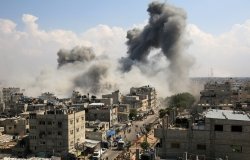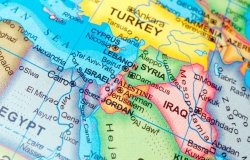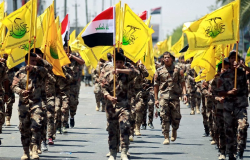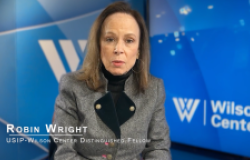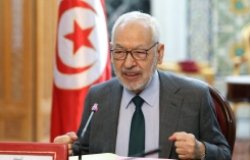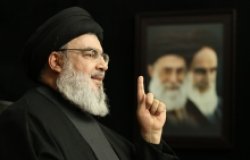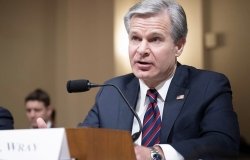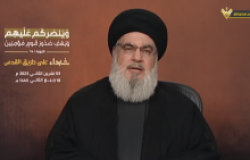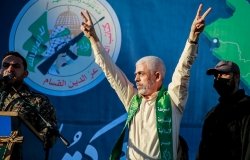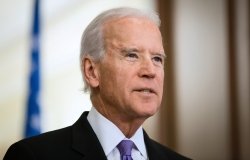Egypt and Tunisia: Democratic Transitions and the Problem of Power
The following paper was published by the Wilson Center's Middle East Programas part of its Occassional Paper Series.
Marina Ottaway
Three years after the beginning of the Arab uprisings, Tunisia and Egypt are moving in different directions. Tunisia has achieved considerable success in adopting a constitution through a process that, despite delays, interruptions, and other crises, has remained reasonably democratic. While still a long way from being a consolidated democracy, the country may yet become one without further upheavals. Not so in Egypt, which has reverted to an authoritarian and repressive regime, more openly militaristic than any since Gamal Abdel Nasser’s days; as a result, a new process of democratization is unlikely to start without other uprisings.
There are some superficial similarities in the two countries’ experiences. In both, change started with a popular uprising, yet neither underwent a revolution—the economic and social elite is still intact, and even the old political elite is still part of the process. And in neither country did the uprisings generate new political forces capable of becoming direct participants in politics, rather than influencing the political process sporadically through street action. Even in Tunisia, where real change took place, it was through the influence of old rather than new political forces.
But two factors in the end determined the different outcomes in the two countries: the nature of the well-established, embedded political forces that existed before the upheaval, and whether there was a breakdown in the mechanisms that generated and maintained the old distribution of power. A transition from an authoritarian to a democratic system involves a redistribution of power, thus, a break in the status quo; the deposition of even a powerful president by itself does not automatically constitute such a break. The departure of Tunisian President Zine El Abidine Ben Ali created a power vacuum, but the deposition of Egyptian President Hosni Mubarak did not.
Tunisia could thus embark on a democratization process not because its people were politically more mature, or its political class more enlightened, as some have suggested, but because Ben Ali’s sudden departure created a power vacuum no single actor could fill. Instead, three competing, socially embedded forces intervened after the initial explosion of rage, channeling it toward long-term goals: the UGTT (Union Générale Tunisienne du Travail), the labor union federation, which first managed to bring the protest from the obscurity of Sidi Bouzid to Tunis and continued to intervene at crucial times; Ennahda, the moderate Islamist party that was able to reconstitute itself rapidly after the collapse of the regime; and, finally, a relatively small group of aging veterans of the Habib Bourguiba period, who were able to build on a romanticized image of Tunisia’s early post-independence period to rally much of the opposition, portraying themselves as the heirs to a democratic and enlightened political tradition. With the country’s small and non-politicized military both unable and unwilling to intervene, and several socially embedded political forces competing with each other, the Tunisian political class was forced to accept pluralism because no group could eliminate the others.
There was never a power vacuum in Egypt: the Supreme Council of the Armed Forces (SCAF) deposed President Mubarak and immediately assumed executive and legislative powers for a transitional period that lasted until June 30, 2012, at which point power was formally transferred to President Mohammed Morsi. In practice, the situation was different. Morsi did not control the military, the police, the intelligence services, the judiciary, or the top levels of the bureaucracy, all of which were not politically neutral but strongly opposed to him. By the fall of 2012, the military was having second thoughts about allowing Morsi to govern. By April 2013, security services, masquerading as the grassroots movement Tamarod, were collecting signatures on a petition demanding Morsi’s ouster.1 On July 3, following massive demonstrations organized by Tamarod and the security services, the SCAF openly seized power again.
With power remaining in the hands of the military all along, a real process of democratic transition would have been unlikely even if the political scene had been pluralistic. In reality, Egypt had a well-embedded state, with the military and the judiciary its most active representatives during the transition. Outside the state, it had a single socially embedded political force, comprising the Muslim Brotherhood and the Salafi groups, which emerged unexpectedly as strong election contenders. It also had numerous secular parties that were not socially embedded, although the oldest of these, the Wafd, had been in existence since 1919, with a hiatus from 1953 to 1978. Egyptian politics after 2011, thus, unfolded as a strange game dominated by three major protagonists operating in different arenas and with different assets: the Muslim Brotherhood, with its organizational ability and its committed followers; the military, with its control over means of coercion and a significant part of the economy; and the courts, with their willingness to issue highly political decisions under the guise of due process of law. Organization and following gave the Brotherhood a clear electoral advantage, but, as it discovered too late, electoral victories did not translate into power once the military and courts refused to respect the results. The military simply did not need to accept democracy and pluralism, although it did do so voluntarily for a limited period.
Tunisia
The self-immolation of Mohamed Bouazizi, the street vegetable seller who set himself on fire in a moment of frustration and rage on December 17, 2010, was the spark that set in motion the Tunisian uprising and provided a powerful example to Egypt and other countries. It was undoubtedly a gruesome event, but it was neither the first of its kind, nor the last. Self-immolations had occurred before in Tunisia, and more occurred later without repercussions. The Bouazizi case sparked an uprising because the UGTT decided to provide support and leadership to keep the protest alive.
The UGTT had good reasons to become involved. Its historical legitimacy, based in part on its role during the decolonization struggle against France, was slipping. The top leadership had not maintained its independence from the government, neither under Tunisia’s first president, Habib Bourguiba, nor under his successor, Zine El Abidine Ben Ali. However, local cadres and much of the rank and file remained independent and continued to embrace the old political ideals of European socialist and communist labor unions. In 2008, the UGTT’s leadership further discredited itself in the eyes of its members and local cadres when it failed to support a major strike by phosphate mine workers in Gafsa in central Tunisia. The area suffers from chronic poverty and unemployment, the result of government neglect as well as unfavorable geography. The strikes, which started in January 2008, were not authorized by the UGTT. Even as the turmoil continued for months, the UGTT leadership did not change its opposition, causing major tensions within the organization.
When Sidi Bouzid, which is located in the same general depressed area of the interior, exploded after Bouazizi’s death, union officials were determined not to repeat the Gafsa debacle, and helped spread the protest to nearby towns and eventually Tunis. The UGTT’s top leadership was eventually replaced, and the organization sought to portray itself as an integral part of the new Tunisian revolution. From the very beginning, thus, a well-embedded organization with both legitimacy and organizational capacity backed the protest and became involved with the transition.2
Equally important to the outcome of the uprising was the non-intervention of the military. The Tunisian military has always been small and apolitical. It maintained its neutrality after the uprising, putting Ben Ali on notice that it would not suppress the protest on his behalf. The neutrality of the military, coupled with the disarray of the police forces, took coercion out of Tunisian politics and created a power vacuum, making room for political organizations.
An early attempt by members of the Ben Ali regime to fill the vacuum by following constitutionally mandated procedures for replacing a dead or incapacitated president quickly failed because Tunisians demanded real change. Initially, Fouad Mebazaa, the president of the Chamber of Deputies, became president, while Mohamed Ghannouchi remained in his post as prime minister. Ghannouchi tried to co-opt members of the legal opposition parties and some labor unions leaders to form a broader cabinet, but most of them resigned in short order, and on February 27, 2011, he was forced to step down. The interim president appointed Beji Caid Essebsi, a veteran politician from the Bourguiba period, as prime minister.
Essebsi’s appointment marked the beginning of the re-entry of the embedded early post-independence political class, which soon established itself as the second major actor in the transition, surpassing in importance the political parties that had been Ben Ali’s tame opposition and the plethora of new organizations that formed in the wake of his demise.
The third embedded political organization to enter the political fray was Ennahda, the Islamist party Ben Ali banned in 1991 after members running as independents secured over 10 percent of the parliamentary vote. Leaders were imprisoned or exiled, as were thousands of members, but the organization survived. When Ennahda Chairman Rachid Ghannouchi returned on January 30, 2011 from a 22-year exile, the organization sprang back to life. On March 1, it was authorized to form a political party, which went on to win 40 percent of the vote in the Constituent Assembly elections in October 2011.
Getting to Elections
As interim prime minister, Essebsi faced the difficult task of marshalling a broad array of political parties, civil society organizations, and ambitious individuals to organize an election in six months. He succeeded admirably, although the election date had to be moved from July to October. The political spectrum was broad, from extreme left communist parties with a long history and a small following, to an array of newly formed slightly center-left or center-right parties mostly differentiated from each other by the personality and ambition of their leaders, to Islamist Ennahda. Cleavages were deep and mistrust was extremely high. On the positive side, no organization was dominant and compromise was the only way forward. Necessity rather than a democratic political culture drove the process.
Essebsi inherited a Higher Commission for Political Reform set up by the Ghannouchi government to amend the constitution before elections. The committee was headed by Yadh Ben Achour, a respected jurist who had resigned from the Tunisian Constitutional Council in 1992 in protest against President Ben Ali. Alongside this commission officially tasked with introducing reform from the top, a National Council for the Protection of the Revolution was formed in early February 2011 by organizations that feared the return of the old regime and advocated more radical reform. The Council, which demanded a decision-making role, was formed originally by 28 organizations, including the UGTT, the bar association, some centrist, leftist, and Arab nationalist parties, and a number of NGOs. Ennahda expressed support for the Council but remained on its periphery.
Essebsi asked Ben Achour to bring together in one organization the Higher Commission for Political Reform and the National Council for the Protection of the Revolution. Thus was born the Higher Authority for the Realization of the Objectives of the Revolution, Political Reform, and Democratic Transition, an unwieldy organization whose very name denoted its hybrid nature. The Higher Authority started with 72 members, but eventually included 155. They represented political parties, trade unions, civil society organizations, regional associations, the neglected regions of the interior, the youth, the families of the victims of state security, even the diaspora in France, as well as a number of “personalities.” The body was given legal status by a presidential decree on April 6, which charged it with writing the election law, delineating electoral constituencies, and organizing elections for a Constituent Assembly.
Despite innumerable conflicts, the Higher Authority managed to hold elections in October. They were accepted as honest both domestically and internationally.
The Constituent Assembly Period
Election results confirmed that the political spectrum was both diverse and fragmented. Ennahda received by far the most support, with 40 percent of votes against 14 percent for the Congress for the Republic (CPR), the second most successful party, and 10 percent for Ettakatol, the third. Ennahda, the CPR, and Ettakatol then formed a coalition government, the so-called troika, with Ennahda taking the premiership, the CPR the presidency, and Ettakatol the presidency of the Constituent Assembly.
Despite the success of the election, the constitution writing process was acrimonious and prolonged. Supposed to last for one year, it took twice as long, with long hiatuses when one group or another boycotted the proceedings and the process came to a halt. Two issues divided the Constituent Assembly and, more broadly, the Tunisian political class: the constitution itself and, underpinning everything else, the issue of power.
The writing of the constitution involved a battle about principles, which was resolved fairly early in the process, and one about the choice of political system, which came close repeatedly to derailing the process. The battle of principles centered on whether the new constitution would maintain the secular character of Bourguiba’s 1959 charter or would incorporate Islamist elements. The old elite of Bourguiba’s days, the UGTT, the leftist parties, and most women’s organizations worried that Ennahda would introduce Islamist elements in the constitution. In reality, Ennahda agreed almost immediately that the constitution would not declare shari’a to be a source of legislation, as other Arab constitutions do. In fact, it did not even mention the word. Nevertheless, Ennahda’s more conservative members tried several times to introduce language to which secularists objected, particularly on the status of women, which an early draft defined as “complementary” rather than equal to men’s. But in all cases, Ennahda gave up, with Chairman Rachid Ghannouchi weighing in on the side of flexibility.
The choice between a parliamentary and a presidential system was not settled easily because it potentially determined the power of various political forces. Secularists wanted to maintain the presidential system, believing they would fare better than Ennahda in presidential elections, while Ennahda favored a parliamentary system. The two sides compromised fairly quickly on the broad lines of the solution—a mixed, French-style system with a president elected by popular suffrage and a prime minister chosen by the parliament and responsible to it. But deciding on the specific competencies of the president and prime minister proved more difficult, with an agreement only reached at the very end.
Parallel to the writing of the constitution was the struggle for power. After the 2011 election, opposition parties started reorganizing, but their attempts to overcome the fragmentation that had given Ennahda the plurality of the vote were largely unsuccessful. At times, such attempts even took on a farcical aspect when alliances disintegrated almost as soon as announced and new parties splintered off existing ones. The most stable alliance was the Popular Front, which brought together leftist parties and ended up playing a role disproportionate to its electoral support, as discussed below.
Centrist parties got nowhere until Beji Caid Essebsi launched Nida Tounes in April 2012. As an umbrella organization rather than a strongly structured party, Nida Tounes has not put an end to the splintering of centrist political organizations—ambitious politicians still play complicated games to promote their political careers. But it has at least created a broader alliance, which, opinion polls suggest, could compete successfully with Ennahda in the elections that will take place in 2014. Nidaa Tounes’ cohesion, however, is precarious and furthermore heavily dependent on Essebsi, who is an astute politician but also a frail man in his late 80s. There has been a lot of jostling in Nida Tounes’ ranks among people who would like to take over from him, but until recently the main contenders appeared to be too weak or too controversial. Essebsi put an end to the jostling in February 2014 by appointing Mohamed Ennaceur as Nida Tounes vice president. Ennaceur is another octogenarian veteran of the Bourguiba presidency, suggesting the alliance has trouble defining itself in terms of the future rather than of the past.
Dealing with Crisis: Return to the Informal Politics of Necessity
Work on the constitution proceeded slowly, and opposition parties started accusing Ennahda of stalling in order to stay in power. Then on February 6, 2012, the assassination of Popular Front leader Chokri Belaid precipitated a full-fledged crisis. The opposition accused Ennahda of being behind the assassination and people took to the streets. While the demonstrations were nowhere as massive as those that brought down Ben Ali, they suggested that the government was losing legitimacy. Prime Minister Hamadi Jebali argued the government should resign and be replaced by a technocratic cabinet to oversee the completion of the constitution and the new elections. The party rejected the call and Jebali resigned as prime minister, although he remained Ennahda’s secretary general.
The country appeared to be settling down when on July 25, 2013 a second assassination of a leftist leader, Mohamed Brahmi, created a new and much deeper crisis. The UGTT called for strikes and demonstrations, crowds took to the streets again, the Constituent Assembly stopped meeting, and some even called on the army to put an end to the rule of Islamists, following the Egyptian example. The suggestion fell upon deaf ears among military and civilians alike.
In a repeat of what happened after Ben Ali’s departure, normal political mechanisms—in this case the Constituent Assembly and the troika government—could no longer control the situation. Instead, a new broad coalition of political and above all civil society groups took the lead, forcing Ennahda and its partners in the government to accept a new transition process. Amidst calls for a “national dialogue,” the UGTT, the Tunisian Union of Industry, Trade and Crafts (UTICA), the Tunisian League for the Defense of Human Rights, and the bar association—the Quartet—imposed a new roadmap.
The four organizations were in no way representative of Tunisia; they did not have an official role in the process, and in fact they acted in violation of the “mini-constitution” the elected Constituent Assembly had adopted for the transition period. Ennahda and the other parties in the troika had legality on their side; the Quartet had none. Both Ennahda and the Quartet had legitimacy in the eyes of some Tunisians, none for others. As in early 2011, political necessity prevailed in the end. After months of haggling, street confrontations, and brinkmanship, Ennahda and the Quartet reached a compromise. Ennahda agreed to dissolve the government and allow the formation of a technocratic cabinet acceptable to all sides. The Quartet accepted that the new government would not take office until the constitution was approved and that the Constituent Assembly would continue to function as a parliament until elections were held later in 2014. Other compromises were reached concerning the formation of the election commission, the election law, and election dates. The details of the process are complicated and do not need to be retold here. What is important is the conclusion: Tunisia overcame the crisis that threatened to halt progress toward democracy by temporarily abandoning the formal rules adopted by a democratically elected assembly and relying on a process that was in part direct, grassroots democracy and in part blackmail by the UGTT. In the end, it worked.
Tunisia has not completed a democratic transition—far from it. It is easy to predict that the process will continue to be difficult, that mutual suspicion among parties and other political forces will remain high. But the most important groups recognize that they cannot eliminate the others: Ennahda, Nida Tounes as representative of the old political establishment, and the UGTT have recognized this in different ways. Compromise under the circumstances is less a question of principle than of political necessity, so it is likely that Tunisia will continue to lurch forward.
Egypt
While Tunisia in early 2014 appears to be moving toward democracy, Egypt has regressed from the semi-authoritarianism of the Mubarak period to full-authoritarianism.3 As a result, Egypt is also more threatened by the possibility of a new upheaval than Tunisia is. Legitimate avenues for meaningful political competition are closed at present, and while the military still has support, concern over military rule is also mounting. Moreover, economic hardship has led to a wave of strikes in different sectors, which is strongly reminiscent of the 2009 and 2010 labor unrest. While a new upheaval cannot be excluded, it is unlikely that it would set Egypt on the path to a democratic transition, given the nature of the most important political actors.
Many Egyptians claim that their country experienced not one but two revolutions, in January-February 2011 and in June-July 2013. In reality, Egypt did not experience even a single real transfer of power in this period. The military had been the power behind Mubarak; in February 2011, the SCAF forced Mubarak out of office and governed directly until the 2012 presidential elections. It then stepped aside briefly, letting the elected president take office, but within a few months it started preparing a new takeover, openly returning to power in July 2013.
The Muslim Brotherhood, Egypt’s only truly embedded political organization, played a central role when the military respected the democratic process, but it was helpless when the military changed tack. For over a year after the uprising, the military experimented with democracy, allowing elections to take place freely and appearing to abide by the results. This allowed the Muslim Brotherhood and other Islamist parties to win 70 percent of parliamentary seats as well as the presidency. When the military accepted the democratic game, secular parties remained marginal. They did not even try to compete with Islamist parties, turning instead to the military and, after an initial rebuff, to the courts to neutralize the Islamists. Politics became a battle between the Islamists and the state—represented by the military, the courts, and eventually some parts of the bureaucracy.
The SCAF Period, March 2011-June 2012
For more than a year after overthrowing Mubarak, the SCAF governed the country. And while it controlled both executive and legislative power, it also made an attempt to observe at least some democratic practices. But the SCAF’s lack of political experience, the weakness of political parties other than the Muslim Brotherhood and the Salafi Al-Nour Party, the interference of an increasingly politicized judiciary, and the reluctance of secular parties to enter into open competition with the better organized Islamists ended up creating a process that was both confused and non-democratic.
The SCAF’s actions initially appeared driven by two major concerns: to steer the country toward parliamentary elections that would allow the military to return to its preferred role of power behind the throne, exiting the political limelight; and to protect its freedom from civilian oversight, its political influence, and its economic assets.
In trying to accomplish these goals, it moved back and forth between a democratic and an authoritarian posture. It consulted with civilians, including representatives of the Tahrir Square “revolutionaries” and of political parties. It decided that democratic elections could not be held without revising some of the most restrictive articles of the constitution, which it submitted to a popular referendum, but then the SCAF unilaterally issued an interim “Constitutional Declaration” that had not even been discussed in public.
It insisted that elections should be held quickly, rejecting attempts by secular parties to postpone them for one year or even longer. It rejected the demand of some secular groups that the military directly appoint a new president, avoiding a presidential election altogether. When parliamentary elections were held, giving Muslim Brothers and Salafis 70 percent of parliamentary seats, the military did not object. And when the Muslim Brothers’ candidate, Mohammed Morsi, won by a narrow margin against Ahmed Shafik, a former military officer and a member of the Mubarak political establishment, it appeared to accept Morsi’s victory as well.
But the SCAF’s tolerance of democracy had clear limits. When the Supreme Constitutional Court (SCC) ordered the dissolution of the parliament on June 14, 2012 after finding the election law unconstitutional, the SCAF did not object, although this was clearly a political decision. Instead, on June 17, it hastened to issue a new constitutional declaration that established that until a new parliament was elected, legislative power would remain in its own hands. The proclamation also decreed that the SCAF would work with the cabinet to define policies, that incumbent SCAF members would retain their posts until a new constitution was promulgated, and that they alone would make all decisions concerning military appointments and the military budget.
The contradictions of this period, with the SCAF accepting formal democracy but seeking to neutralize the outcome, are explained by the peculiar configuration of political forces embedded in Egyptian society: as mentioned earlier, they comprise the military, other state institutions including the judiciary and the top ranks of the bureaucracy, and a single organization rooted in the society rather than the state, namely the Muslim Brotherhood. Secular parties, which failed to establish themselves as important players in their own right, are seeking instead the protection of the military and the courts. Politics became a battle between state institutions and the Muslim Brotherhood, and the Brotherhood lost.
The Morsi Period July 2012-July 2013
Since the military coup d’état of July 3, 2013, former President Mohammed Morsi and the Muslim Brotherhood have been accused by the military, the courts, and the public of an extravagant array of crimes and sins, including terrorism and espionage, incompetence and maladministration, and attempts to “Brotherize” Egypt and undermine its culture and society by appointing Islamists to positions of power. A closer examination of the year during which Morsi was theoretically in power shows a different picture of an administration with little power to impose its policies. Morsi would undoubtedly have liked to appoint Islamists to important positions in all government institutions, and he did so when he could, but he was hemmed in from the very beginning by the military, the courts, the ministry of interior, the security apparatus, and the top levels of the bureaucracy. The Morsi administration was undoubtedly politically inept and ineffective. Some of his appointments showed complete lack of political judgment. For example, he chose Adel Asaad Al-Khayat, a member of an organization that had perpetrated a massacre of tourists in Upper Egypt in November 1997, to be governor of Luxor. And certainly Morsi failed to make even a minor dent in Egypt’s economic problems—but the same was true of the SCAF before him and the military-appointed government after he was deposed.
After he was inaugurated as president on June 30, 2012, Morsi made an attempt to challenge the SCC, calling its decision to dissolve the parliament illegal and inviting its members to return to work, but he backed down quickly. From that time until the end of the year, the battle between Morsi and the courts was stalemated: a number of suits with potentially devastating consequences for Morsi and the Muslim Brotherhood remained in front of the courts, but decisions were repeatedly deferred. Most threatening were suits challenging the legality of the Muslim Brotherhood and its Freedom and Justice Party, as well as that of the second Constituent Assembly, which the parliament had succeeded in electing before being dissolved. (The first Constituent Assembly had been declared unconstitutional by the SCC).
The battle between Morsi and the military appeared to end in a Morsi victory on August 12. Taking advantage of a terrorist attack in Sinai a few days earlier that left 16 soldiers dead and the military wondering whether its political involvement had come at the expense of its security mission, Morsi appeared to take charge. He revoked the SCAF’s second Constitutional Declaration, thus, taking legislative powers into his own hands until the next parliamentary elections. He also ordered the retirement of Defense Minister and SCAF Chairman Field Marshal Mohammed Hussein Tantawi and of Chief of Staff of the Armed Services Lieutenant General Sami Anan, appointing General Abdel Fattah al-Sisi to be the commander-in-chief of the armed forces and minister of defense. At the same time, Morsi made Major General Sedki Sobhi, commander of the Third Field Army, chief of staff, promoting him to lieutenant general. He also named Major General Mohammed al-Assar to assistant defense minister. The move had been negotiated with al-Sisi and other top officers and was accepted without resistance. But if Morsi believed that these appointments gave him control over the military, he soon discovered this was not the case.
While state institutions were all important in the months of the Morsi presidency, the political opposition was marginal to the real contest for power. Parties jockeyed to form alliances—as in Tunisia, efforts became farcical at times, as party leaders constantly announced the formation of new alliances crisscrossing and overlapping previously announced ones, without anything happening in practice. In late November, opposition parties finally managed to come together in a single National Salvation Front, but the real protagonists of the political drama remained Morsi and the Brotherhood, the SCAF, and the courts.
The Final Crisis
In retrospect, it is clear that the confrontation that eventually led to the July 3, 2013 military coup started brewing as soon as Morsi was elected. A series of events in fall 2012 helped precipitate the situation, however, as Morsi started challenging both the courts and the military more openly. Whether he did this because he had an exaggerated view of his power or, conversely, because he was pushing back against his powerlessness is difficult to ascertain, but there is no doubt that he became more defiant.
The military had no intention of submitting to Morsi’s authority, on major or even on minor decisions. In a telling example, General al-Sisi declared in an interview that a turning point in the relationship between Morsi and the military was the president’s handling of the October 6 military parade, a yearly event celebrating Egypt’s success in the 1973 war with Israel.4 Morsi included among the guests Tarek al-Zomor, who was involved in President Anwar Sadat’s assassination during the October 6, 1981 parade. The fact that al-Sisi chose to bring up this episode to explain why Morsi had to be deposed highlights the clash of cultures and mentalities that doomed the relationship between Morsi and the military.
As conflict between Morsi and the military intensified, the stalemated confrontation with the judiciary also reached a crisis point in November. Despite the ever-present threat that the courts would dissolve it, the Constituent Assembly had by this time almost completed a draft of the new charter, although the participation of non-Islamist members had been intermittent. With a new court hearing on the legality of the Constituent Assembly approaching and amid rumors that this time the courts would reach a verdict and dissolve the assembly, Morsi issued his own constitutional declaration on November 22. This declaration immunized the Constituent Assembly against a dissolution order from the courts and also put the laws the president issued in the absence of a parliament above judicial review. The proclamation was a dangerous overreach on the part of a president who had no real control over the instruments of power. He did not control the military and had no authority over the police. Both ministers of interior who served under him, Ahmed Gamal El-Din and Mohammed Ibrahim, were part of the Mubarak-era security apparatus, and Ibrahim was kept in his position by the military after Morsi’s ouster. Furthermore, Morsi had to contend with officials in the top ranks of several ministries who wanted to see him fail—bureaucrats deliberately created shortages of gasoline and cooking gas, for example, and engineered frequent electricity blackouts to discredit the Morsi administration and create anger against the Muslim Brotherhood. Shortages and blackouts suddenly stopped after the coup, although blackouts restarted months later because of a shortage of fuel to keep power plants operating.
By spring 2013, pressure against Morsi and his government was relentless. The Tamarod campaign to collect signatures on a petition demanding Morsi’s ouster was in full swing, with the ministry of interior and the security services doing most of the work.5 Media, which had become relatively free after January 2011, became part of the anti-Muslim Brotherhood chorus. Secular political parties were critical of Morsi’s excessive powers, but at the same time they did not want new parliamentary elections to take place because they feared another Islamist victory. Once again, they found a ready ally in the judiciary: when Morsi called for new parliamentary elections, setting April 27, 2013 as the starting date, the Supreme Constitutional Court blocked the process by declaring two successive drafts of the new election law unconstitutional, demanding ever more changes.
The July military takeover was the inevitable consequence of the uneven battle between the Muslim Brotherhood, whose power was based on election results, and the state, which controlled instruments of coercion and administration. It was a contest the Brotherhood was bound to lose.
Conclusions
In January 2011, Egypt and Tunisia appeared to embark on similar transition processes, triggered by unplanned, spontaneous popular revolts against leaders who had long overstayed their welcome. Three years later, Tunisia appears to be continuing down the path of democratic transition, although it has a long way to go yet—Ennahda Chairman Rachid Ghannouchi likes to remind his audiences that one flower, the constitution, does not make a spring. Egypt has moved from the semi-authoritarianism of the Mubarak regime to increasingly blatant authoritarianism. Although presidential elections are scheduled for May 26-27, the main candidate for the post is newly retired General al-Sisi, suggesting that elections will not make much difference.
The differences between Tunisia and Egypt are likely to be long-lasting. Tunisia’s politics can only be pluralistic, because it is dominated by the competition among three embedded political forces—Ennahda, Nida Tounes and its allies, and the labor unions—that cannot eliminate each other. There is no political pluralism in Egypt. Instead, there is only one embedded political organization, the Muslim Brotherhood, which is powerless vis-à-vis the military, the judiciary, and the politicized bureaucracy.
The example of Egypt raises troubling questions about how democratic transitions can occur in states where state institutions, including the military, are the major political actors. Was the outcome in Egypt inevitable, given the enormous imbalance between state institutions and a society represented by only one embedded political force? The prevailing narrative, strongly encouraged by the authorities, puts all blame on the Muslim Brothers. If they had acted democratically, been inclusive rather than excluding other political organizations, and if they had not sought to impose an extremist Islamist ideology on a society where the majority did not share those views, democracy would have flourished in Egypt. There is no doubt that the Muslim Brotherhood showed a self-defeating lack of political acumen. But there was no way for democracy to emerge from the competition between a single political force and politicized state institutions.
It is a disturbing conclusion. The two examples show that the required first step in a democratic transition is the breakdown in the mechanisms through which power is generated and exercised—only then it becomes possible to put in place democratic mechanisms. In Egypt, the uprising did not cause a breakdown and a power vacuum. The democratic process initially tolerated by the SCAF was essentially theater. There will be more theater in the months to come, as Egypt goes through the motions of presidential and parliamentary elections that will not affect the distribution of power. The best Egypt can hope for from this process is the formation of a competent government that can start addressing fundamental economic and social problems. As for democracy, it is difficult to see how it could be relaunched without a new uprising massive enough to create some fissures in the military and the ruling establishment.
Click here for a PDF version.
Endnotes
1 This mostly comes from oral communications. But also Asma Alsharif and Yasmine Saleh, “Special Report: The Real Force Behind Egypt’s Revolution of the State,” Reuters, October 10, 2013.
2 Based on interviews with UGTT leaders in Sidi Bouzid, Sousse and Tunis, and International Crisis Group, “Popular Protest in North Africa and the Middle East (IV): Tunisia’s Way,” Middle East/North Africa Report No.106, 28 April 2011
3 On Egypt as a semi-authoritarian state under Mubarak, see Marina Ottaway, Democracy Challenged: the Rise of Semi-authoritarianism (Washington, DC: Carnegie Endowment for International Peace, 2003).
4 General al-Sisi gave a four-hour interview to the daily l-Masry al-Youm in October 2013. Excerpts were translated and published by the newspaper’s English counterpart, Egypt Independent, on October 10 and 21.
5 This mostly comes from oral communications. But also Asma Alsharif and Yasmine Saleh, “Special Report: The Real Force Behind Egypt’s Revolution of the State,” Reuters, October 10, 2013.
Related Program

The Islamists
Learn more about Hamas and how it relates to similarly aligned organizations throughout the region. Read more
